In this post, I’m going to share with you advice and guidance on creating your own personas, give you an understanding of how to use them effectively, and most importantly provide you with a template to guide your persona development.
- what is a customer persona
- benefits of customer personas
- how to create customer personas
- creating the personas with our free template
- making the most of your customer personas
Dive right in and get your own copy of the persona template:
Download your free customer persona template
What is a customer persona?
A customer persona is a fictional representation of your buyer, based on research and real data about your current consumers. Traditional customer personas include things such as fictional names, demographics (age, sex, location), customer frustrations and goals.
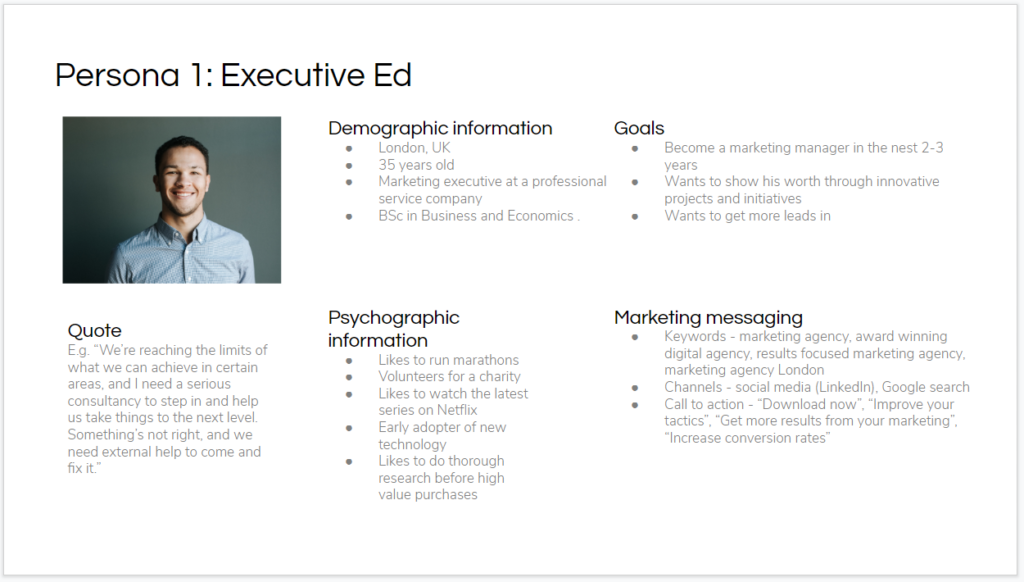
Evolution of the traditional customer persona
Creating customer personas is critical to understanding who to target for your marketing efforts. However, in today’s market, user intent has transformed the way we look at the buyer, the way we interact with them and changing their buying motives. You simply cannot talk to a multitude of personas, but what you can do is group them by their commonality, their user intent.
You have to remember that a customer always has a goal in mind, and that’s at the heart of their intention. For instance, someone coming to the website looking to read up on the best places to visit in Europe – it doesn’t matter their demographic, age or current location – has a reason for being on your site, so you provide them with the information they need.
By grouping traditional personas based on intent, it allows you to serve a multitude of diverse customers and satisfy their needs on your website.
Using an example of a travel and accommodation website, the user intent could be as follows:
- Book travel and accommodation together with ease
- Discover new places to visit
- Book low-cost travel and accommodation on one website
Once you have mapped out the varying user intents that exist across your customer personas, you have the tools to explore the user’s journey and how you can serve the motivation at each stage.
What are the benefits of creating customer personas?
Personalisation
Personalisation is one of the most powerful tools of the digital era. Getting to know your audience will help you provide the right content to the right segment at the right time. Each of us is thought to be exposed to 4000 – 10,000 ads every day, making it more difficult than ever for brands to cut through the noise. Moreover, personalisation can help build trust.
An astonishing 83% of consumers trust word-of-mouth recommendations over other sources. Why? Because recommendations from friends and family lack commercial intent. Personalisation enables marketers to tailor their messages in such a way that their audience doesn’t feel like they’re being sold to, but they’re being offered a solution, a means to reach their goals. To quote Tom Fishbourne, CEO and Founder of Marketoonist, “The best marketing doesn’t feel like marketing” and personalisation is the way to achieve this.
Enables you to understand your customer’s needs
Ignoring customer profiling is like agreeing to buy a birthday present for someone that you know nothing about and have never met.
Are they male or female? How old are they? Where do they live? How will you deliver the gift? Would they appreciate a set of bath bombs, or be much more excited to receive the new Marvel DVD? If you buy them a new mobile phone case, do they have an i-phone or an Android, or do they even own a phone?
Without any information about the person that you are targeting, you are playing a guessing game.
The same goes for customer personas. If you don’t spend some time getting to know who your customers are, how they behave and what they want, then you may end up wasting valuable time and money and in the worst case, be left with a set of bath bombs that no one wants.
Beat the competition
With more competition than ever, markets are becoming saturated, so you need to be able to keep hold of your customer’s attention for all the right reasons.
Improving the customer’s experience of interacting with your company should lead to increased conversions and increased loyalty.
How to create a customer persona
Emerging technologies and the rise of the digital age have changed the way we collect information about our customers. With more data than ever at our fingertips, it is vital that you take note and think about how your business can best use the intelligence available to you.
Collect data
To create your customer personas you’ll need as much information as possible on who your audience is. Start by looking at your target market defined in your market strategy. Select the three best performing segments and conduct some research on them.
Data gathering can be a daunting task and you might not know where to start. Luckily, there are plenty of online tools and resources readily available to marketers nowadays. You can start by looking at your existing audience using analytics tools such as:
- Google Analytics
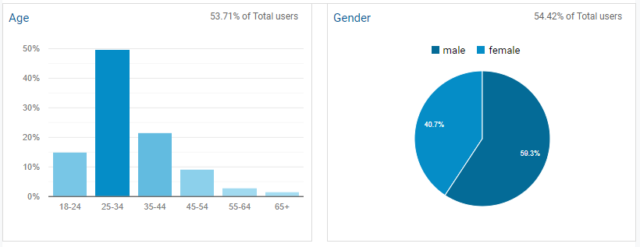
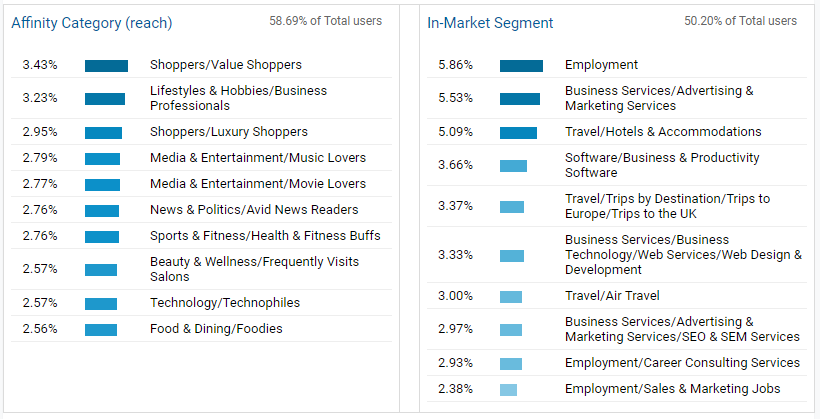
- social media analytics available from Twitter, Linkedin, Facebook and Instagram
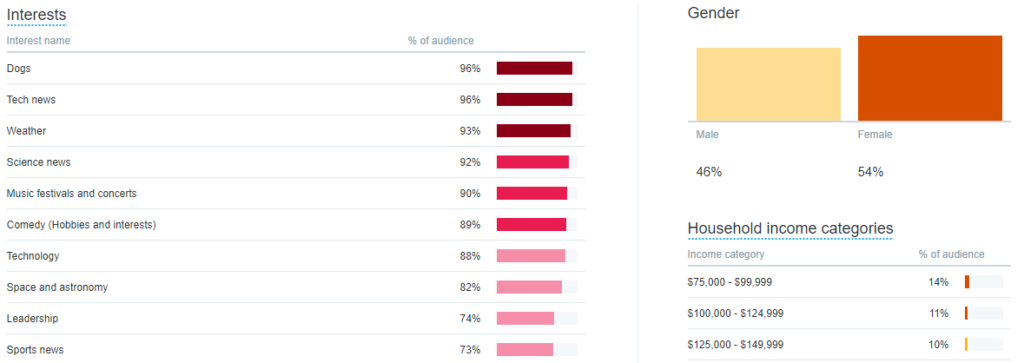
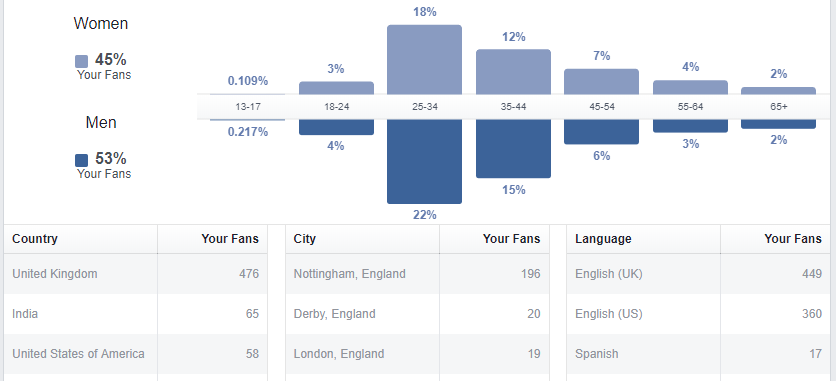
- YouGov.co.uk – data from an online global community
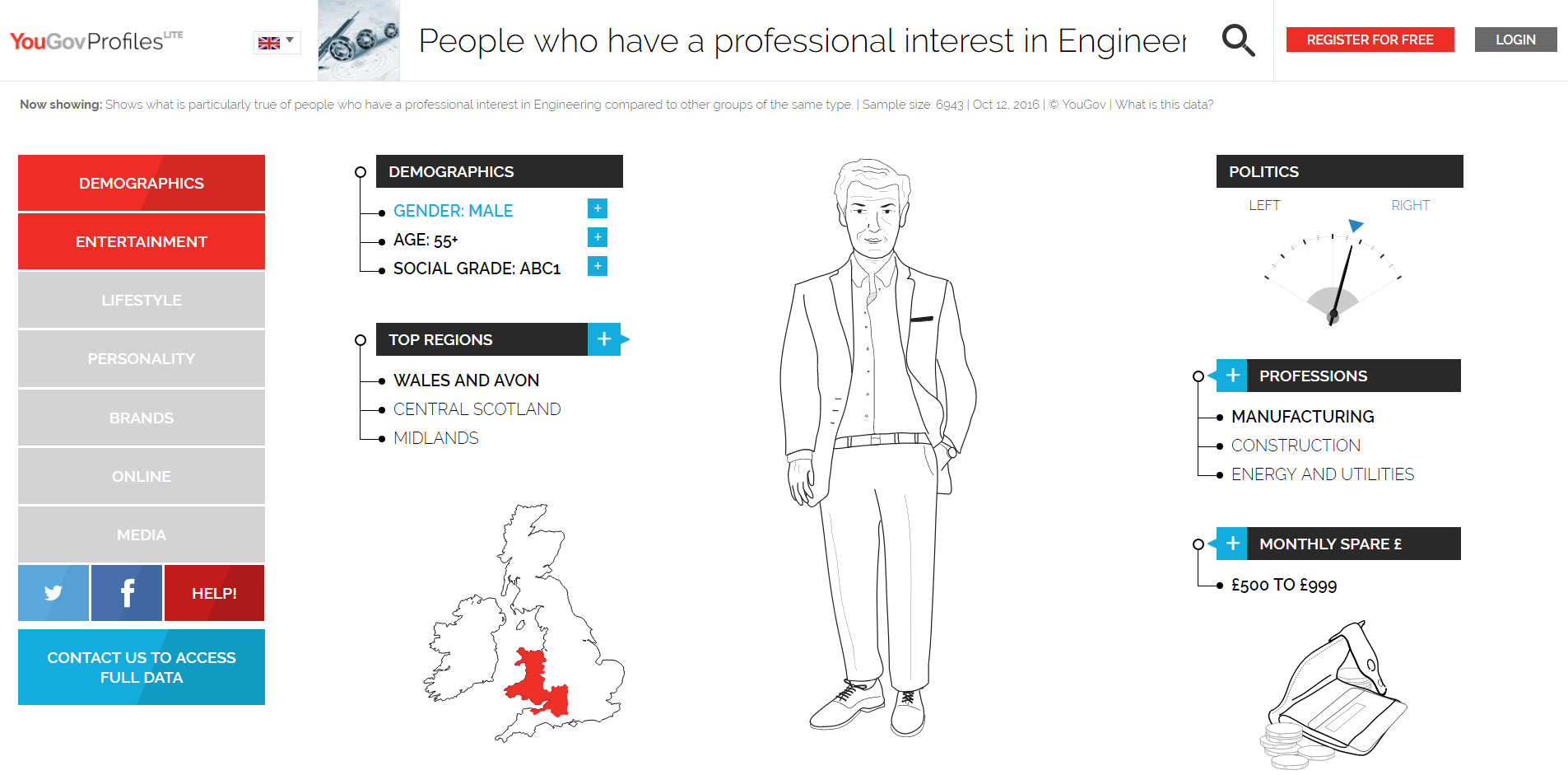
- email reports
- official studies conducted by bodies such as the Office for National Statistics
However, these won’t give you the full picture that you need. You’ll have to go in-depth by conduction some primary research on your existing customers or prospects such as:
- phone interviews
- focus groups
- online questionnaires
- interviews with your sales team
If you’re just starting up your business and you have no historical data or any prospects yet, look at what audiences your competitors target. Look at who their followers on social media are, perform a backlink analysis to see who links to their website or use tools such as SimilarWeb to gain insights into their website traffic and audiences. Another method of collecting data is adding some questions to your contact forms on your website.
Analyse the data
Start broad and then narrow your data down to specifics. First, cover the basics:
- geographical location (country, county, city)
- age
- gender
- language
- marital status
- household income
- education
- homeowner or renting
- lives in a flat or a house
It’s important to then go into psychographic details as these will have a higher impact on how your target market makes decisions and progresses through your sales funnel, especially for high-value purchases. Narrow your research down to personality traits such as:
- hobbies and interests
- likes and dislikes
- lifestyle
- attitude
- fears
- challenges
- goals
- values
- spending habits
- skills
- common objections during the sales process
- marketing communications preferences
These are more likely to surface during primary research activities such as interviews. The information you need will depend on what type of business you run and what type of product or service you offer. Here is a list of 150 questions you can ask your interviewees to cover as much ground as possible. The more details you have, the easier it’ll be for you to put yourself in their shoes and create adequate campaigns and communications.
If you’re a B2B company your questions could be:
- what type of company they work for
- what their role is
- what their level of education is
- what a typical workday look like for them
- what their career goals are
- what their challenges are
- what marketing messages and tactics they prefer.
Create the personas with our free template
Now that you have all the information that you need, it’s time for your personas to take form. Identify patterns and commonalities among your data and select a number of types of customers that stand out. It’s recommended that you have between three and five personas to make sure that you cover all your typical customers and the profiles are not too diluted.
We’ve put together a template that you can use to make it easier for you to create personas. Just fill in the fields with the information you have:
- add a headshot of your customer – it’ll humanise the profile
- give your persona a name – it’ll make it easier to remember
- add the demographic details
- add the psychographic information
- add a quote that your customer would typically say – make this about their challenges and their goals
- add the type of marketing messages they would like to use or you’d be best positioned to use with a specific persona
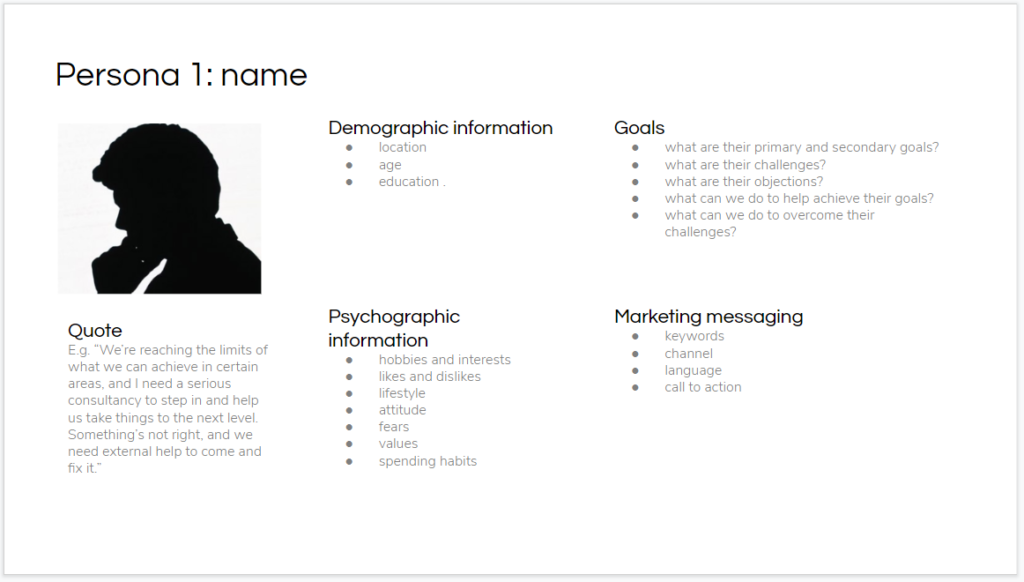
Making the most of your customer personas
Once you have your personas, it’s time to use them and apply them to your marketing strategy. Adapt your tactics and messages to each persona to convert prospects into customers and then develop long-lasting relationships with them. Label your prospects in your CRM system and direct them down the funnel that is more likely to convert them through tailored communications.
It’s good practice to track your customer personas’ evolution over time and amend them to reflect the development of your customers. Review your personas as your business grows and moves into new markets. Let us know how you get on in the comments below or get in touch.







